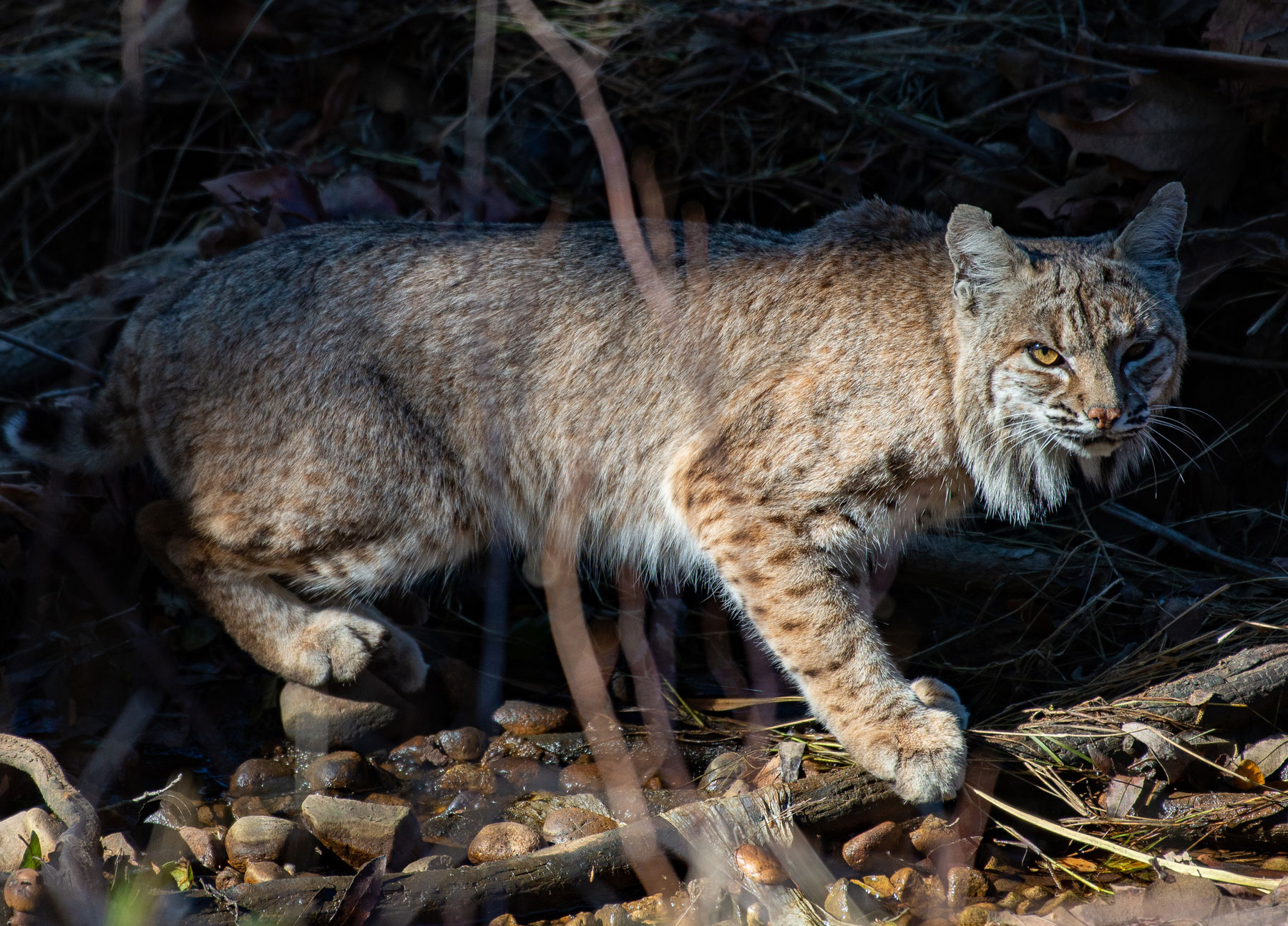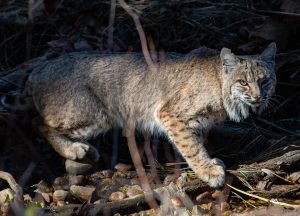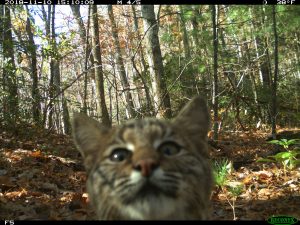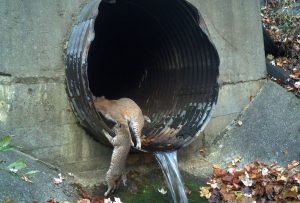
Even though you may never have seen one, the stealthy predator Lynx rufus is all around us here in Western North Carolina and East Tennessee. Wily and elusive, bobcats are not only present but pervasive both in and out of Great Smoky Mountains National Park.

“Many people are surprised to learn how common they actually are,” says GSMNP wildlife biologist Joe Yarkovich. “As a very secretive animal, they often avoid human detection but can be found in just about any area of the park.”
This medium-sized member of the cat family ranges from southern Canada throughout the United States, with the exception of several midwestern states. Its range overlaps only slightly with that of the lynx (Lynx canadensis), whose larger paws provide it with a competitive advantage when traveling and hunting in deep snow.
Part of the reason the bobcat is rarely seen is that it has developed an excellent camouflage. The fur on its back and side is light to dark brown with black streaks and spots. Its namesake short tail has distinct black bands on the upper side but is white below, a characteristic that distinguishes the bobcat from the lynx.
Besides the bobbed tail, bobcats distinguish themselves from domestic cats by being larger, ranging from 28 to 40 inches in length. Adult females weigh around 20 pounds, while the males average 26.5 pounds. They have long legs and prominent ears, which may have a distinct black tuft.

According to Mammals of the Smokies, a field guide published by Great Smoky Mountains Association in 2009, “although they are generally quiet, loud yowls or meows may be heard, particularly during the breeding season,” which peaks in March, followed by a gestation period of around 60 days. Two to three young are born in dens that may be positioned in rock crevices or ledges, brush piles, or hollow trees. They are weaned at two months and become independent in fall or early winter.
Yarkovich says there hasn’t been much formal study of this charismatic but reclusive animal in the park, where it frequents a wide variety of habitats but prefers rocky or brushy areas where forests border fields and meadows. Those open areas have high densities of their principal prey species—the cottontail rabbit—and provide den sites and cover. Mammals of the Smokies says that bobcats are known to kill deer fawns on occasion and that their prey is sometimes cached or covered.
“While actual daylight sightings do occur but are somewhat rare, photos on our trail cameras are much more common,” Yarkovich says. “The Wildlife branch uses remote trail cameras for various operations throughout the park, and it is quite common to catch a photo of bobcats crossing their field of view. The last time I saw one in person was about a month ago on Goldmine Loop Trail off of Lakeview Drive.”
Bobcats are widespread throughout the region, including areas near human development. According to Mammals, adults typically maintain a distinct home range of 0.4 to 1.9 square miles with males covering a larger area than females, while juveniles are transient and will set up a home range once a resident animal dies or leaves.

Social organization among bobcats is maintained by scent marking using urine, feces, or secretions from anal glands deposited at distinct locations along the side of a trail, at a switchback, or on a rock or log.
Whenever bobcats come up, the topic of mountain lion sightings is also raised. Yarkovich says definitively there is not an established population in the Smokies.
“Researchers have investigated the park and have never been able to find any evidence of mountain lion here,” he says. “We receive reported possible sightings of them every year, but our own staff has never been able to confirm any of these sightings or find evidence of them. Most of the time these people are catching fleeting glimpses of coyotes.”
During a two-year camera trap study along 28 miles of Interstate 40 in the Pigeon River Gorge east of the Smokies, conservation biologists observed bobcats at nearly all camera stations but documented few areas where bobcats were successfully crossing the interstate.
“Along this section, 27 perennial creeks and branches flow under the interstate through structures not specifically designed for wildlife,” says Steve Goodman, a conservation biologist with National Parks Conservation Association.

Creek banks and their overlying spur ridges historically provided important habitat and movement corridor opportunities for bobcats and other terrestrial wildlife across this rugged landscape. But today, most pathways are essentially blocked due to existing drainage structures not being suitable for bobcat passage because they are too small, too dark, or too wet. Road cuts from highway construction have also vertically truncated the ridgelines descending to the highway.
“The presence of high median barriers further makes highway crossings an intractable challenge for bobcats at most sites studied,” Goodman says. “Safe Passage has made recommendations to our partners at both the North Carolina and Tennessee Departments of Transportation to replace several of these culverts with larger ones that would allow dry passage for bobcats. These would also help other wildlife species including box turtle and black bear and would restore the natural flow of water and creek bottoms for aquatic organism passage.”
The Safe Passage Fund Coalition—represented by The Conservation Fund, Defenders of Wildlife, Great Smoky Mountains Association, National Parks Conservation Association, North Carolina Wildlife Federation, The Wilderness Society, and Wildlands Network—makes it possible for donations to be collected for future road mitigation and wildlife crossing structures between Asheville and Knoxville. Learn more about how Safe Passage is working to reconnect the Pigeon River Gorge for bobcats and other wildlife at SmokiesSafePassage.org.
Subscribe to get the latest posts sent to your email.
The Great Smokies Welcome Center is located on U.S. 321 in Townsend, TN, 2 miles from the west entrance to Great Smoky Mountains National Park. Visitors can get information about things to see and do in and around the national park and shop from a wide selection of books, gifts, and other Smokies merchandise. Daily, weekly, and annual parking tags for the national park are also available.